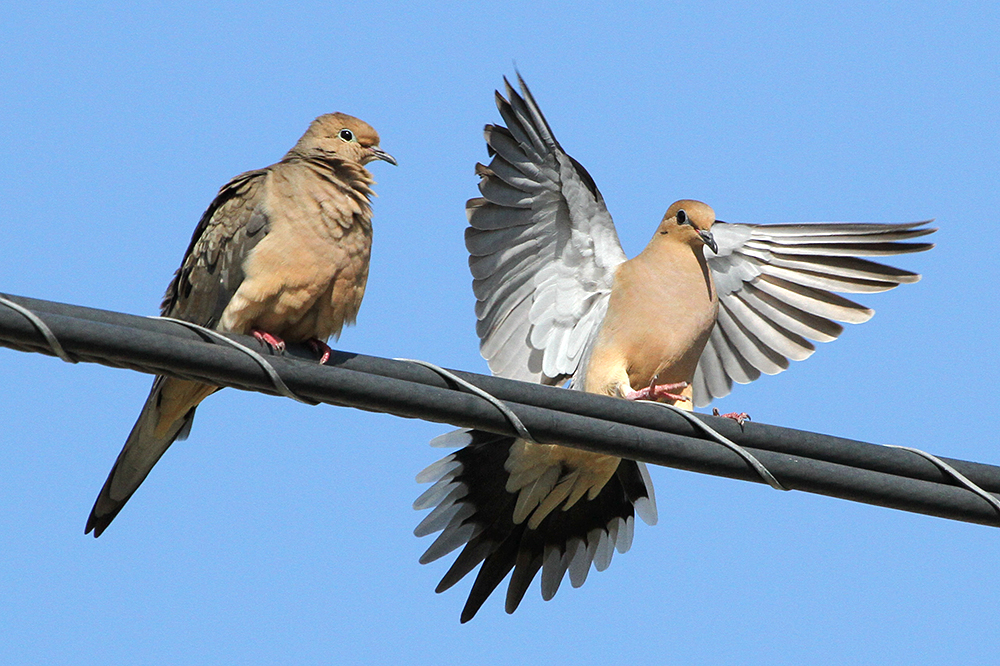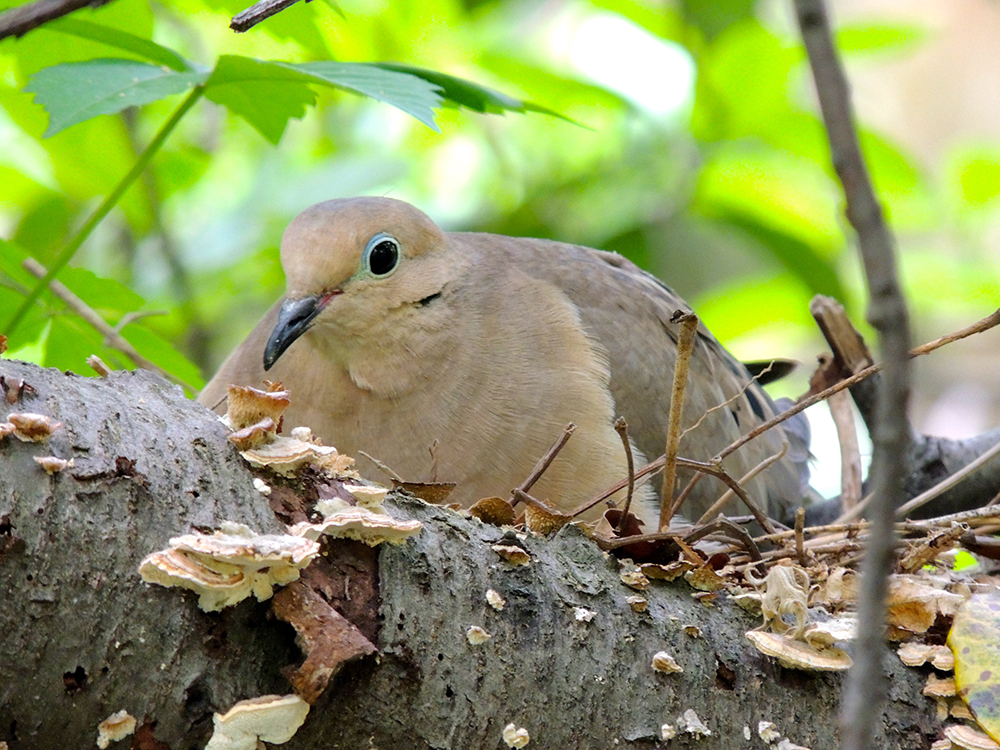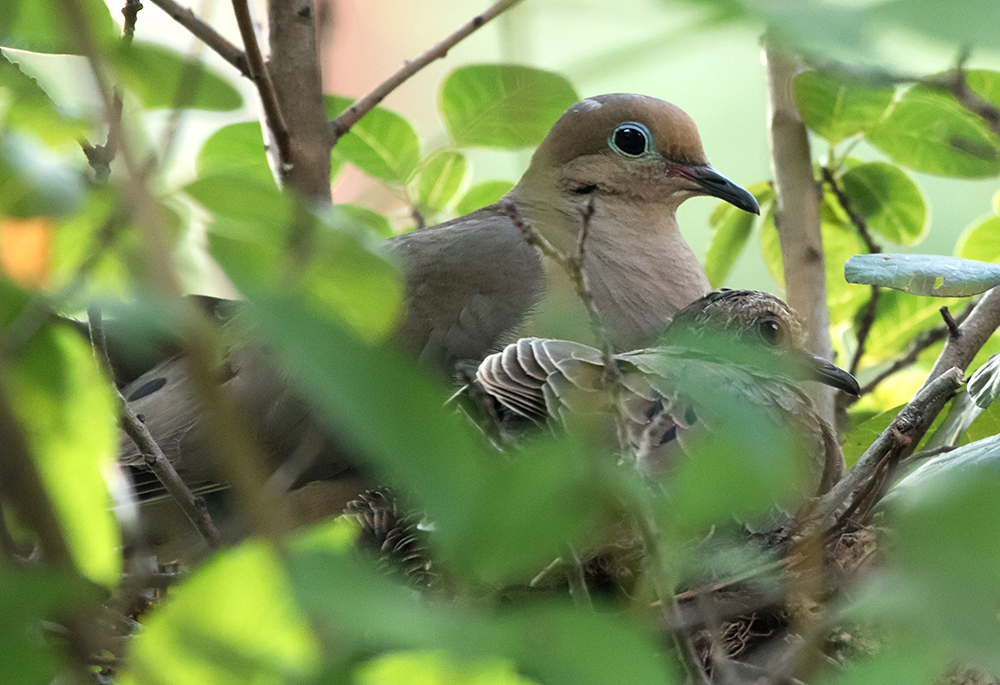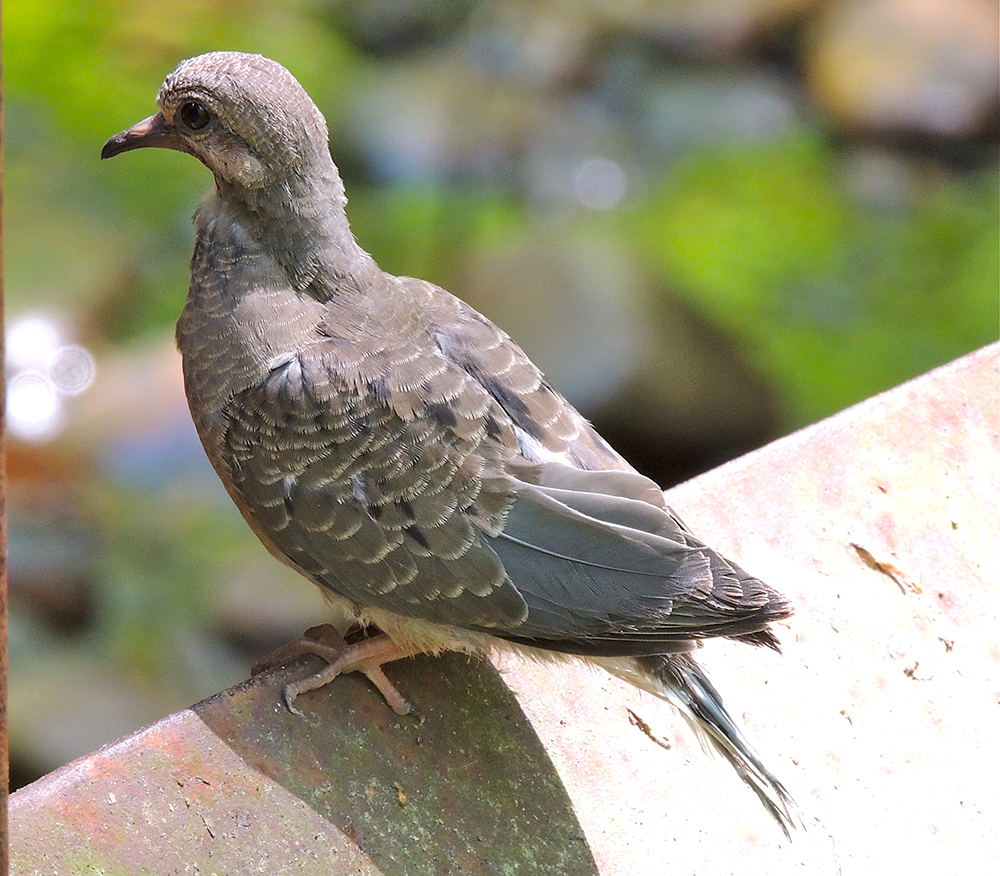| Year-round Resident | |
| Has Nested in Park |
Mourning Doves are common year-round residents who nest at Monticello Park.
Where to See Them in the Park
Mourning Doves often stay hidden in the trees, but you have a good chance to see them when you visit the park. They sometimes go into the stream, more often to drink than to bathe. In the spring, male-female pairs move around together and sometimes forage on the ground.
Physical Description

From a distance, male Mourning Doves look like plain brown birds. Up close, they show subtle iridescent feathering. The male has tinges of blue and pink on his head, neck, and breast. The female has a grayish-brown head and nape.

The tail is long and pointed, and both males and females have white tips on the ends of most of their tail feathers.

Mourning Doves build flimsy nests out of sticks, grass, and other materials. Both the male and the female build the nest, sometimes near areas with a lot of human traffic. The female lays two eggs, and both parents incubate them.

The hatched birds stay in the nest about 12 or 13 days. The adults might raise a second brood.

Sometimes, recently fledged Mourning Doves are in the park. The juvenile above was perched on the railing of the bridge. Most of its feathers were dark brown with light tips, including the head feathers. Not all of the tail feathers had grown in, and its bill was dark red rather than dark gray.
Vocalizations
The primary vocalization of the Mourning Dove is a mournful cooing, delivered with a puffed up throat and a closed bill. The whistling sound when they fly is made by their feathers and is nonvocal.
Hear the vocalizations and sounds of the Mourning Dove.
Notes
Mourning Doves can be hunted legally in 41 states. They are the most popular game bird in the country, and more than 20 million are killed by hunters each year. They can be hunted legally in Virginia Wildlife Management Areas during some parts of the year, with a bag limit of 15 per day. They cannot be legally hunted at Monticello Park.
Origin of Names
Common Names: Mourning from their mournful cooing. Dove from the Anglo-Saxon dufan, which means dive, probably based on their fast flight.
Genus Name: Zenaide after the wife of naturalist Charles Lucien Bonaparte, who was the nephew of Napoleon I and the person after whom the Bonaparte's Gull was named.
Species Name: Macroura is Greek for long tail.
Mourning Dove video footage
Return to the Index
